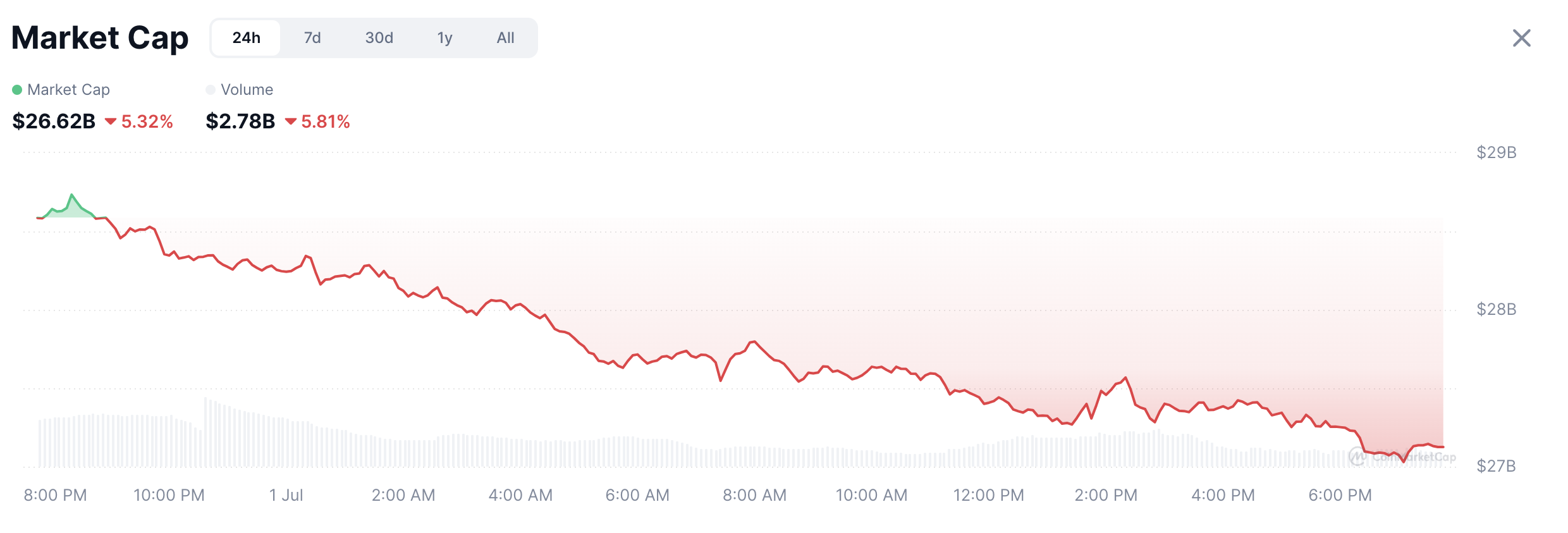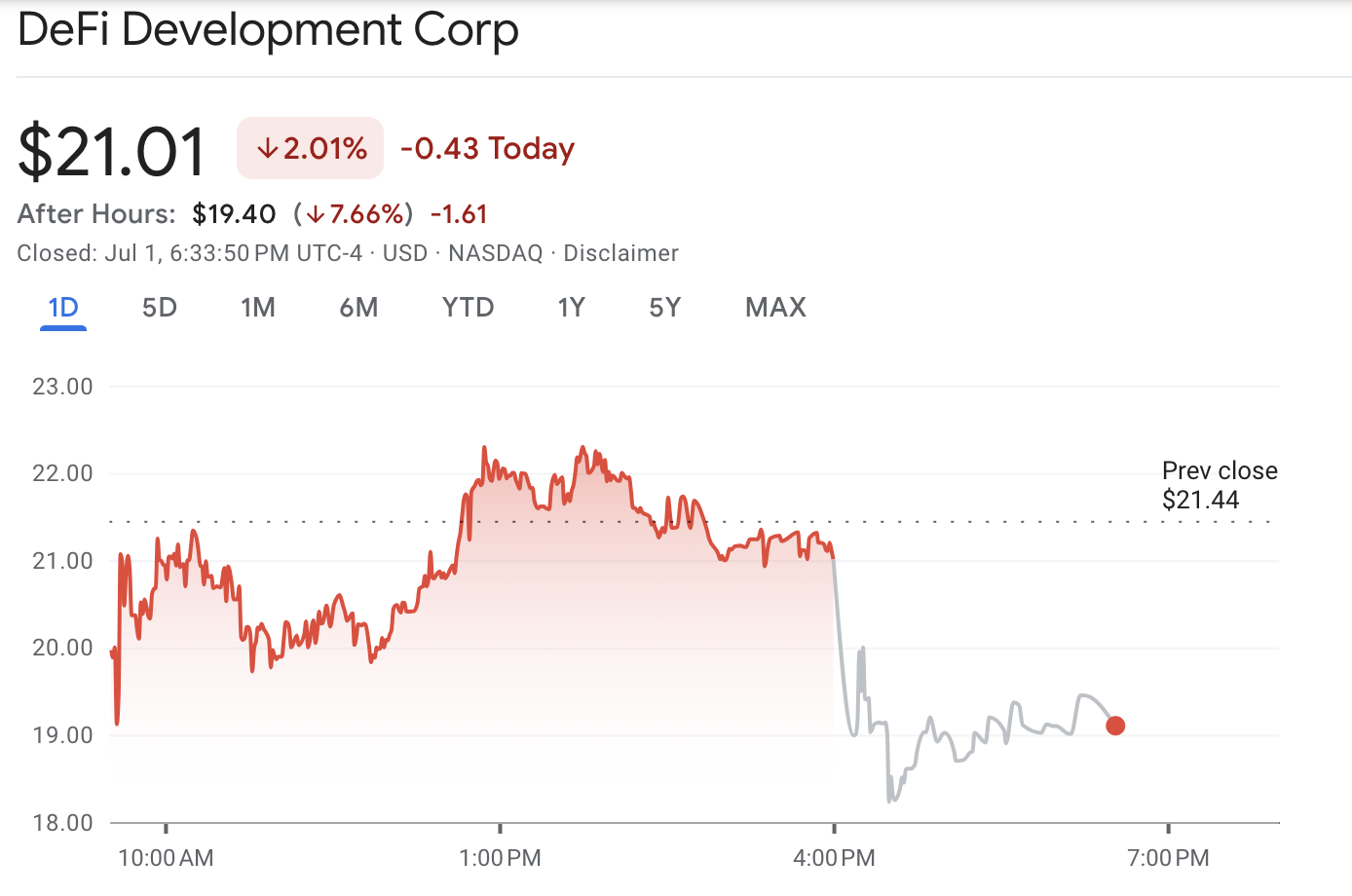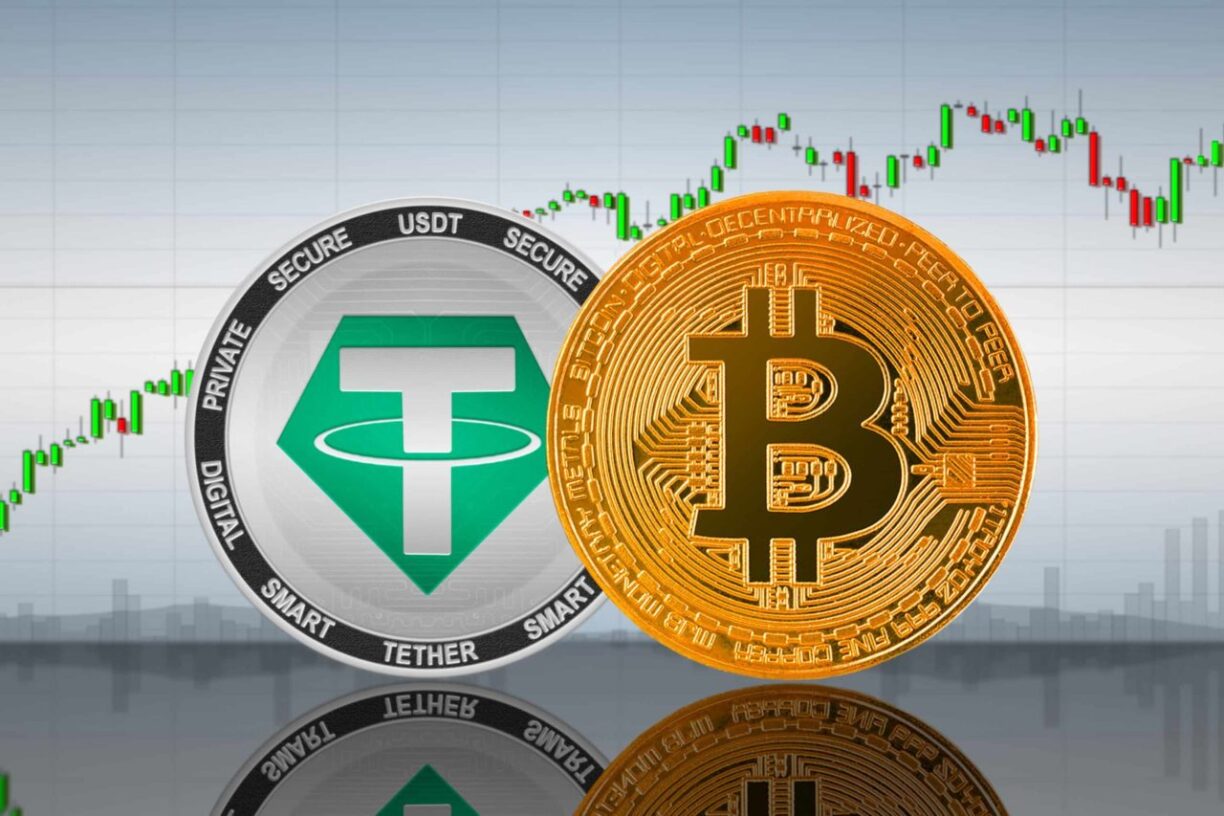H1 2025 Crypto Market Report- Market Trends, Key Metrics, and Institutional Flows

The post H1 2025 Crypto Market Report- Market Trends, Key Metrics, and Institutional Flows appeared first on Coinpedia Fintech News
After peaking at $3.7 trillion in Q4 2024, the crypto market entered 2025 with weaker momentum. Bitcoin had hit $109,000 and a $2.1 trillion market cap, driven by ETF inflows and favorable macro trends.
However, H1 2025 saw a sharp slowdown. The total market cap fell to $2.4 trillion mid-cycle before recovering to $3.31 trillion by July 1. Bitcoin experienced a major drawdown but rebounded to a new ATH of $112K, supported by steady institutional buying from Strategy and Metaplanet.
Macroeconomic pressures added to volatility. The Fed held rates steady at 4.25%-4.5%, with inflation at 2.4%. Geopolitical tensions, including U.S.-China tariffs and Middle East unrest, kept investors on edge. Despite this, crypto showed resilience, backed by regulatory clarity and rising demand from emerging markets.
Investor sentiment was highly volatile. The Fear & Greed Index plunged from 94 in December to 10 in March but recovered to 64 by July. Still, sentiment remains range-bound between 40 and 65, signaling lingering caution in the market.
Table of contents
Market Overview
| Metric | January 1 | June 30 |
| Total Market Capitalization | $3.26 trillion | $3.28 trillion |
| Monthly Exchange Volumes | $2.32 trillion | $1.07 trillion |
| Bitcoin Dominance | 56.8% | 64.0% |
| Ethereum Dominance | 12.3% | 8.0% |
| Rest of Altcoins Dominance | 31.5% | 26.0% |
| Fear and Greed Index | 66 | 65 |
Bitcoin Performance
| Metric | January 1 | June 30 | Remark |
| Bitcoin Price | $94,951 | $108,800 | Gains surged by 12% |
| Exchange Reserves | 2.89 Million BTC | 2.44 Million BTC | Indicates higher accumulation |
| ETF Inflows | $5.25 Billion (monthly) | $4.60 Billion (monthly) | Slightly lower inflows |
| Active Addresses | 827K | 900K | Increase shows demand |
Key Events
- Institutional and government accumulation: Strategy, Metaplanet, and different countries’ governments added BTC.
- Geopolitical dips caused by wars like Iran-Israel and US tariff threats caused brief slides.
Ethereum performance
| Metric | January 1 | June 30 | Remark |
| Ethereum Price | $3,366 | $2,524 | Gains declined by 27% |
| Exchange Reserves | 19.5 Million ETH | 19.02 Million ETH | Slight difference in reserves, shows lesser accumulation |
| ETF Inflows | $101.16 Million (monthly) | $1.16 Billion (monthly) | A 10x growth in inflows witnessed |
| Active Addresses | 372K | 356K | Number of unique addresses are slightly down |
Key events and developments
- Continued protocol upgrades, Stablecoin and DeFi activity remained strong.
- Institutional flows into ETH ETFs increased massively.
- The price stayed suppressed due to Geopolitical factors.
Top Category Breakdown
| Category | Notable Tokens | H1 Trend Summary |
| Layer‑1 | SOL, ADA, AVAX | Bright growth led by ecosystem expansion and ETF odds are higher |
| Layer‑2 | OP, ARB, MATIC | Strong gains as scaling adoption increased |
| Meme Coins | DOGE, SHIB | Volatile but fetching attention, especially DOGE, with ETF odds rising |
| AI Tokens | FET, RNDR, AGIX | Momentum aligned with AI and crypto crossover |
| Gaming/Metaverse | SAND, AXS, GALA | Modest growth is witnessed |
| DeFi | UNI, AAVE | Gained from on‑chain activity and yield demand |
Top Gainers
| Cryptocurrency Gainers | Percentage Gain (H1 2025) | Major Catalyst |
| Monero (XMR) | $186 to $318 ~ 71% gains | Significant price surge due to heightened demand for privacy-focused cryptocurrencies. |
| Hyperliquid (HYPE) | $22 to $39 ~ 74% gains | Rapid growth is attributed to enhanced liquidity and user engagement. |
Top Losers
| Cryptocurrency losers | Percentage Loss (H1 2025) | Major Catalyst |
| Bitcoin SV (BSV) | $55 to $24 ~ -45.23%gains | Regulatory uncertainties, and declining investor confidence due to competition and security concerns.. |
| Pi Network (PI) | $2.99 to $0.48 ~ -36%gains | Price dropped due to weak market sentiment and failure to meet adoption expectations. |
Stablecoin Performance & Market Share
| Metric | January | June | Remark |
| Market Cap | $204 Billion | $251.55 Billion | Significant increase in overall market cap. |
| Stablecoin Market Cap Share | 7.9% | 8.9% | Jump in stablecoin market cap share. |
| On-Chain Volume | $982 Billion | $1.39 Trillion | Increase in on-chain transaction volume. |
The first half of 2025 marked a new phase in stablecoin evolution, characterized by rising volumes, shifting dominance, growing institutional adoption, and increased legislative support. While USDT and USDC remained dominant, smaller players like PYUSD, RLUSD, and DAI slightly expanded their market share. Ethereum continued to lead as the primary stablecoin settlement layer, though TRON and Solana gained traction as emerging launchpads.
Crypto ETF Performance
- US Bitcoin Spot ETF recorded a cumulative net inflow of $48.97 billion.
- Total net assets for Bitcoin ETFs reached $134.11 billion as of June 30.
- Bitcoin ETF holdings represent 6.27% of the total Bitcoin market cap.
- US Ethereum Spot ETF saw a cumulative net inflow of $4.21 billion.
- Total net assets for Ethereum ETFs stood at $10.32 billion as of June 30.
- Ethereum ETF holdings equal 3.42% of the Bitcoin market cap.
- In-kind redemption mechanisms are gaining popularity for assets like Dogecoin (DOGE) and Aptos (APT).
- There are currently 72 altcoin ETF applications pending regulatory approval.
DeFi Sector Overview
- Total Value Locked (TVL) in DeFi rose from $86 billion to $112 billion by June 2025, signaling increased adoption and capital inflow.
- AAVE dominated the lending market with over 60% share and $16 billion+ in borrows.
- The AAVE V3 protocol continued to attract collateral, and anticipation around the V4 launch further boosted confidence.
- DEXs like Uniswap, Jupiter, and PancakeSwap saw increased network activity, resulting in higher fees and supporting DeFi’s rebound.
- HYPE’s fee-free DEX enhanced user activity across multiple chains.
- Lending protocols from HYPE also gained traction during H1 2025.
- AAVE lending yields ranged between 5% to 8% APY, down from 2024 due to higher TVL and reduced risk premiums.
Important News & Events
- In H1 2025, nearly 334 – 344 hacks caused $2.2 – $2.5B losses, including Bybit’s $1.5B breach.
- ProCap and Grant Cardone’s firms entered the Bitcoin treasury race, intensifying corporate crypto adoption.
- U.S. SEC signaled openness to in-kind redemptions for crypto ETFs, fueling speculation about future altcoin fund approvals.
- Norway is exploring a crypto-mining ban, while a different country, Kazakhstan, is exploring a national crypto reserve.
- Metaplanet and Strategy aggressively expanded their BTC holdings, marking a corporate treasury shift toward Bitcoin as a long-term reserve asset.
- Ripple dropped its cross-appeal in the SEC case, paving the way for a near-end to the multi-year legal battle.
- World Liberty Financial (WLFI), backed by Trump family ties, expanded USD1 stablecoin on BNB Chain, boosting RWA and DeFi interest.
Final Outlook For H2 2025
Despite all the ups and downs, H1 2025 proved just how resilient the crypto market has become. Bitcoin surged to a new high of $112K, and the overall market rebounded to $3.31 trillion.
Now, if bullishness increases, then Bitcoin may hit $180,000 – $200,000, Ethereum $5,000 – $6,000, by year-end 2025. This growth could be fueled by future Fed rate cuts, ETF inflows, and the Stablecoin Payment Act. Moreover, DeFi is also regaining momentum with $112B in TVL, and institutional interest keeps rising. With altcoin ETFs on the horizon and big players entering the space, H2 2025 could be the setup for a major breakout, which could possibly take the total crypto market cap toward the $4 – $5 trillion mark.
[article_inside_subscriber_shortcode title=”Never Miss a Beat in the Crypto World!” description=”Stay ahead with breaking news, expert analysis, and real-time updates on the latest trends in Bitcoin, altcoins, DeFi, NFTs, and more.” category_name=”Research Report” category_id=”6″]
FAQs
If ETF inflows, Fed cuts, and stablecoin reforms hold, Bitcoin could reach $180–200K, with market cap nearing $4–5T.
Crypto sentiment swung from extreme fear (index ~10 in March) to moderate greed (~64 by July)
Yep, it absolutely is. Public company holdings more than doubled from 2024 — from 64 companies to 151. Firms are no longer experimenting — they’re going all in, especially after the U.S. government signaled policy support.
Many users speculate that large corporate purchases can drive price surges, reduce circulating supply, and influence retail investor sentiment. There’s also concern about centralization if too much Bitcoin is held by a few large entities.
The post H1 2025 Crypto Market Report- Market Trends, Key Metrics, and Institutional Flows appeared first on Coinpedia Fintech News
After peaking at $3.7 trillion in Q4 2024, the crypto market entered 2025 with weaker momentum. Bitcoin had hit $109,000 and a $2.1 trillion market cap, driven by ETF inflows and favorable macro trends. However, H1 2025 saw a sharp slowdown. The total market cap fell to $2.4 trillion mid-cycle before recovering to $3.31 trillion …











